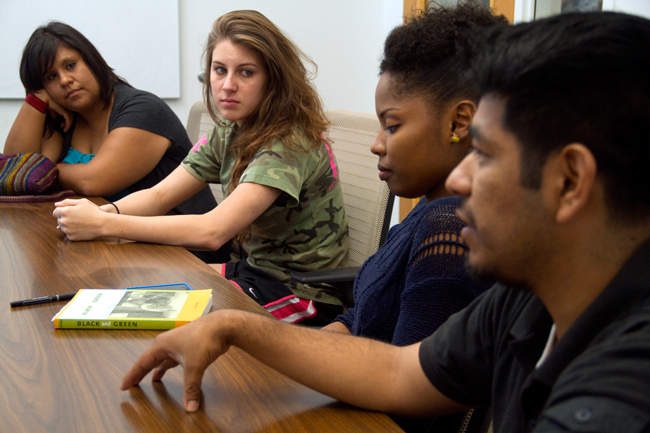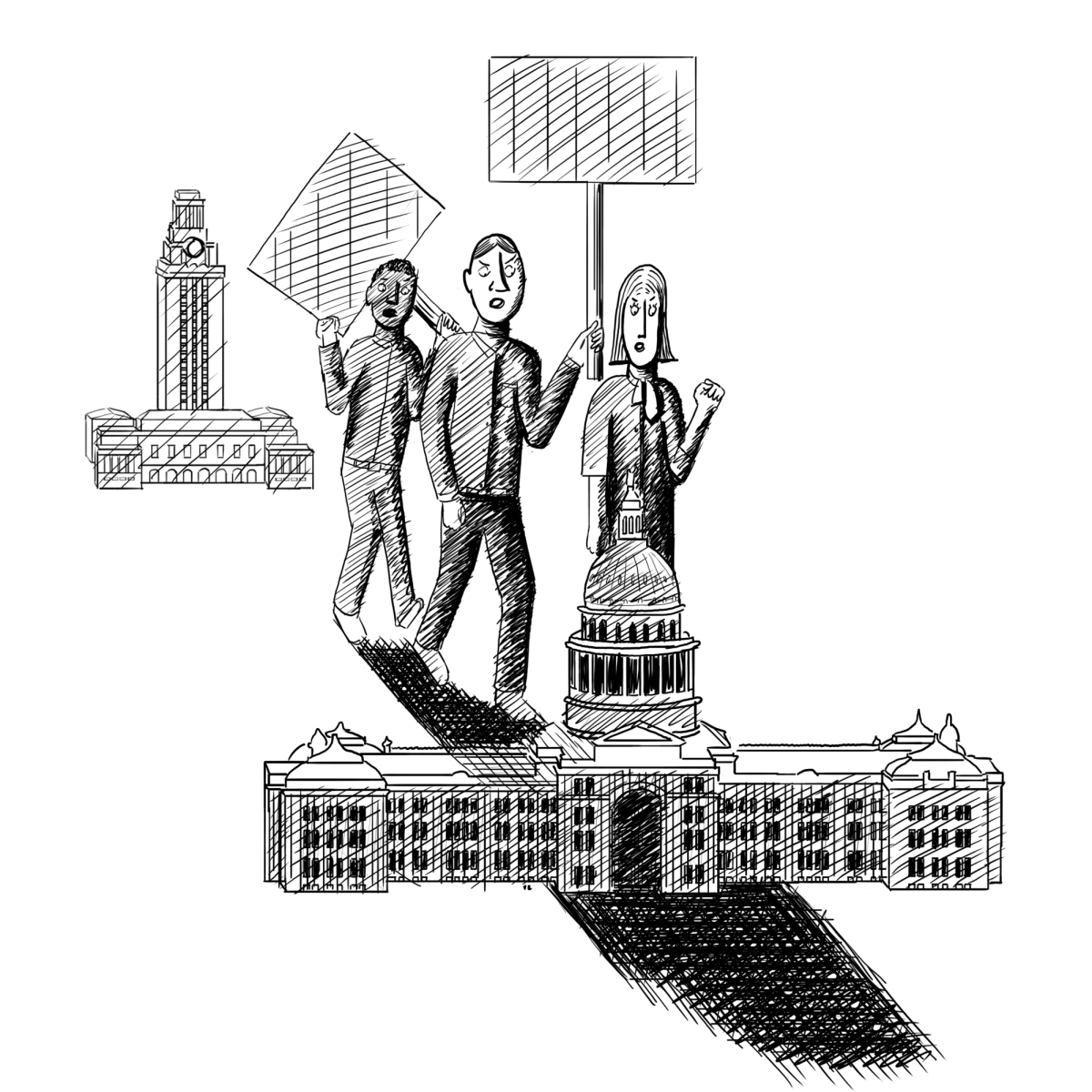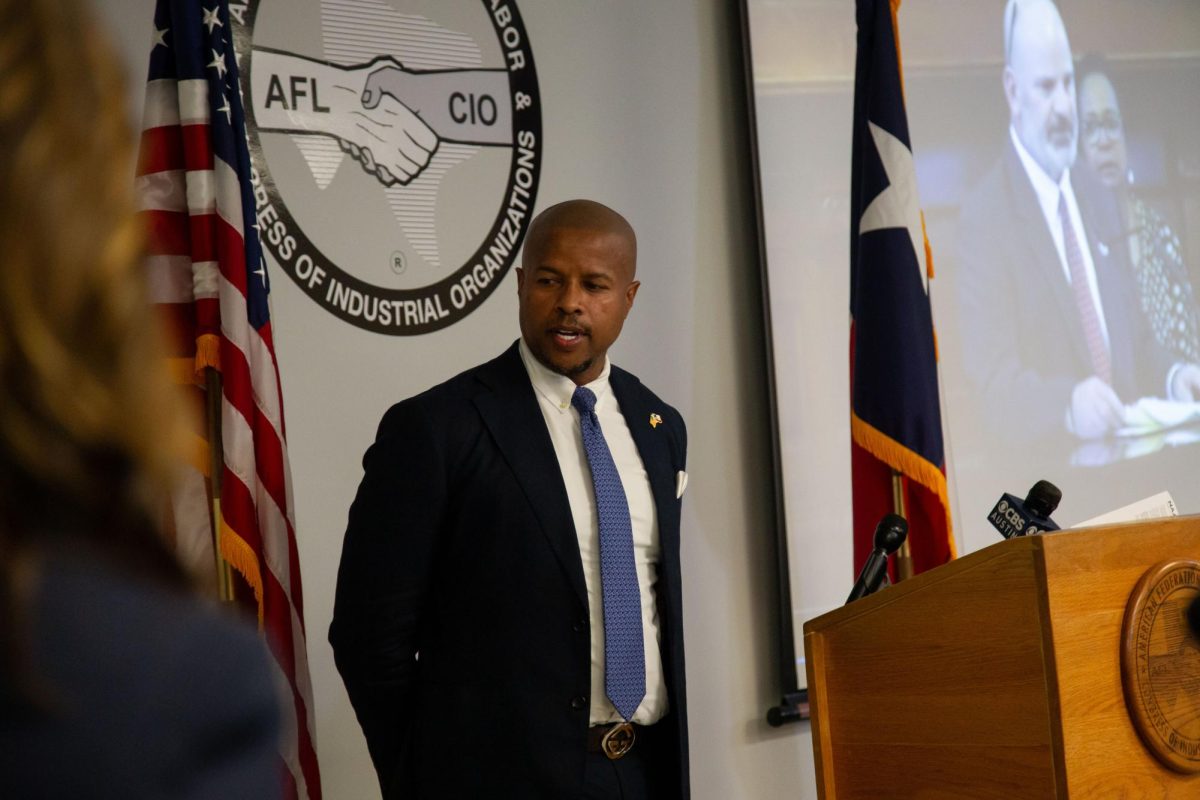Native American students make up a small percentage of the campus community, but seven students speaking out this afternoon hope to show administrators the true significance of their heritage.
While UT provides centers and spaces welcoming many cultural communities, the University offers no home base for students of American Indian or indigenous heritage, said ethnic studies senior Roberto Flotte. Flotte, who identifies himself with the Jumano Apache people, will present his concerns at the Al Kiva Auditorium in the Sanchez Building from 2 p.m. to 3:30 p.m. today. Each student presenting identifies with a different American Indian or indigenous community, and agreed to speak during a symposium regarding the issues they face as college students and ways UT could improve outreach and involvement to these communities.
The symposium is a part of the first ever Uniting the Eagle and the Condor Native American and Indigenous Student Symposium, presented by the Native American and Indigenous Students Assembly. The conference runs from 1 p.m. today until 2 p.m. Saturday and will also include a Native American blessing, art show, keynote speakers from several tribes, fundraising reception, medicinal workshop, indigenous games and an Aztec traditional dance.
Flotte said he wants the event, which he hopes will continue annually, to unite UT students who identify as American Indian or indigenous and give them a chance to show administrators the actual size and strength of their community. With the lack of a designated cultural center for these students, Flotte said he was presented with a cultural dilemma upon entering UT.
“I think I felt invisible at many times, that I didn’t exist,” Flotte said. “I am also Mexican-American, and there were spaces for Mexican-Americans, but no spaces for Native Americans. I couldn’t find that place where I felt comfortable being myself completely.”
Shannon Speed, associate vice president for the Division of Diversity and Community Engagement, is the co-director of UT’s Native American and Indigenous Studies program, which began five years ago to support research into the languages, cultures and history of indigenous people in Texas and across the world. The program offers an undergraduate certificate and graduate and doctoral portfolio curriculum, in addition to supporting the student symposium. Speed said she agreed that UT could become more involved in providing a place for American Indian and indigenous students on campus.
“For students who have interest in indigenous studies, I think we have an outstanding number of courses, but I don’t think as an institution the University does a particularly good job of addressing American Indian students,” Speed said. “Across the board at institutions, you will hear them all talk about black students and Latino students, but Native American students are not even mentioned. They are really left out, and American Indian students are really conscious of it.”
Speed said because there are only three federally recognized American Indian tribes in Texas, University administrators have not focused on recruiting students from American Indian backgrounds. What administrators should realize, she said, is the huge number of American Indians living in Texas who are affiliated with federally unrecognized tribes.
“Because the state is only thinking about the federally recognized tribes, I think the legislature has not seen Native Americans as a significant constituency,” Speed said. “When the University began paying attention to underrepresented groups, it happened because people were putting pressure on the legislature. Native Americans are only .02 percent of the student body — there aren’t enough to put on the pressure.”
Speed said administrators have only recently enhanced their efforts to recruit American Indian students by creating an admissions position to reach out to different tribes.
Flotte said he hopes administrators will receive positive pressure to increase efforts in recruitment and community building from himself and other students at the Eagle and the Condor Conference. Although the percentage of students identified as American Indian or indigenous is small, Flotte said the University population is actually greater than reflected because of how census data is considered. When determining University diversity, if a student chooses to identify as Native American and another race or ethnicity, they will automatically be counted in the second category.
Anthropology graduate student Shanya Cordis, who identifies with the Arawak people and is one of the symposium’s seven speakers, said this system concerns her.
“There’s no real point in them counting Native Americans because they’d rather cut their losses in order to make other minorities look bigger,” Cordis said. “As someone who identifies as indigenous and black, for them to categorize me as strictly African-American is to completely disregard my ethnic identity and upbringing.”
At Arizona State University, race determination is based on the same census system, but recruitment of American Indian students has been an important aspect of admissions since at least the early ‘90s, said Annabell Bowen, projects and operations coordinator for American Indian Affairs at ASU. Bowen serves the campus community alongside Diane Humetewa, special adviser to the president on American Indian Affairs.
“ASU made history because I think we’re the only major university that started that position to create a special adviser,” Bowen said. “Because of what we did, the University of Arizona and Northern Arizona University have created the same position and we have a group that meets together about every two months to discuss how we can collaborate.”
Bowen said ASU sends student ambassadors to the 22 American Indian tribes of Arizona in efforts to reach out to middle school and high school students and create a campus community even before students enter college. In addition to her office, the university also offers resources like tutoring, study lounges and special convocation and awards ceremonies through American Indian Student Support Services. ASU is also home to 16 student organizations celebrating these cultures, including a Native American sorority and fraternity.
Bowen said it is through efforts like these made by her office, AISSS and multiple organizations that American Indian and indigenous students have found a home on ASU’s campus like the one Flotte hopes UT can create.
Printed on Friday, April 27, 2012 as: Indigenous students express UT concerns




















